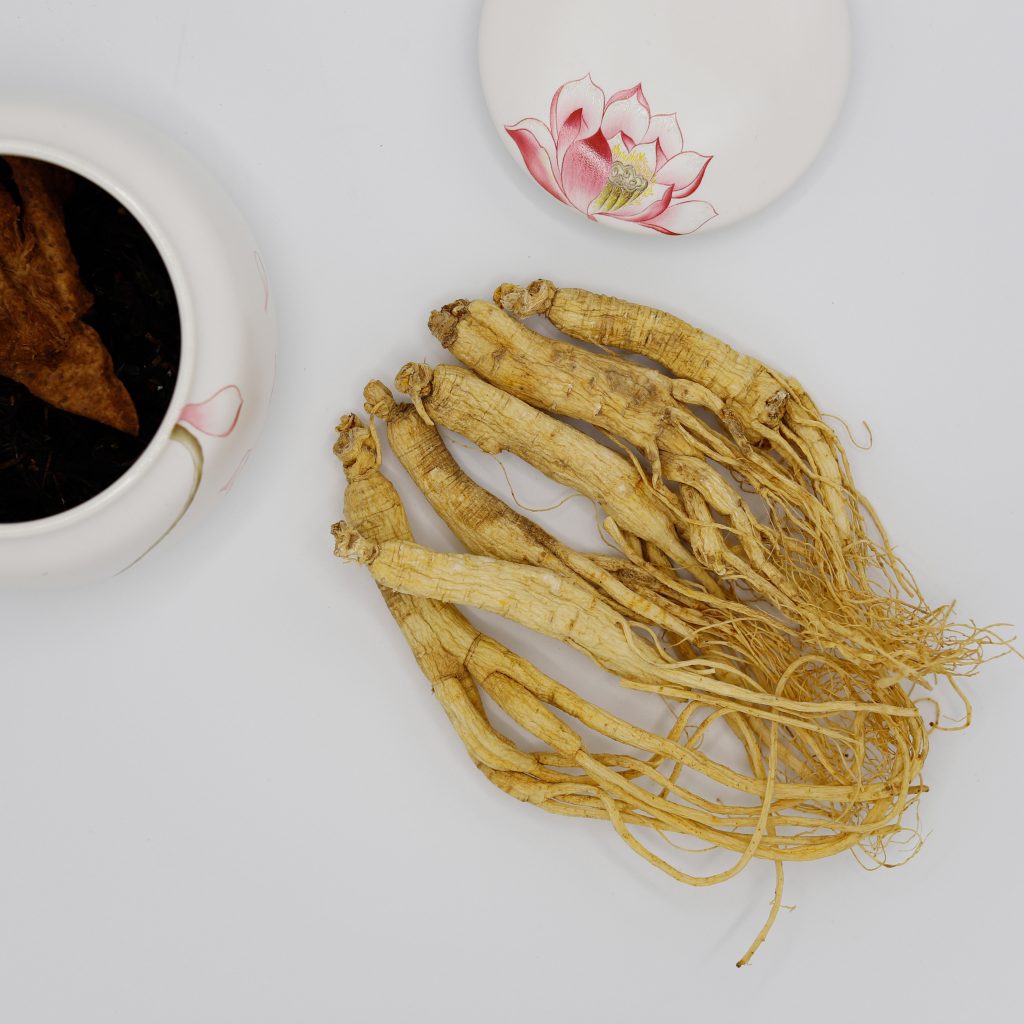Panax ginseng grows in the mountainous forest area of Northeast China, mainly in the provinces of Jilin, Liaoning and Heilongjiang, and other places of China.
Panax ginseng is a world-famous traditional Chinese medicine. It belongs to the taxonomic family Araliaceae and can be divided into wild Panax ginseng and cultivated Panax ginseng. Generally, Panax ginseng is harvested in autumn . Panax ginseng, known as ‘the King of Herbs’, is a perennial herb. Wild Panax ginseng, also called ‘mountain ginseng’, grows slowly and is relatively rare. Therefore, cultivated Panax ginseng is the predominant strain on the market because it generally grows faster than wild ginseng. In general, cultivated Panax ginseng is planted in the garden, hence it is called ‘garden ginseng’. The growing environment of Panax ginseng is extremely stringent, and it has high requirements for light, temperature, humidity, and soil pH. Panax ginseng prefers scattered light or diffuse reflected light and is afraid of direct exposure to strong light, so wild ginseng generally grows in the broad-leaved forests with linden trees . Panax Ginseng is resistant to cold, and a cool environment is suitable for its growth. Panax ginseng is afraid of high temperature and heat, and it is most suitable to grow in an environment of 15℃ to 20℃. When the temperature exceeds 35℃, Panax ginseng’s stems and leaves will be burned, it will stop growing, and even the seedlings may die. However, in winter, Panax ginseng can survive winter safely even at -40℃. Panax ginseng likes water, but it is afraid of waterlogging and is intolerant of drought, so there are strict requirements on soil moisture. The soil moisture suitable for the growth of Panax ginseng is around 40% to 50%. When the soil moisture is higher than 60%, the oxygen content in the soil reduces, and Panax ginseng is prone to the phenomenon of root rot. However, when the soil moisture is less than 30%, Panax ginseng will lose water and dry up, which is not conducive to the expansion and development of the root. The growth of Panax ginseng requires rich humus, and it likes to grow on brown forest soil that is neutral or slightly acidic, with a pH value of between 6.0 and 7.0 .

-1-768x1024.jpg)

